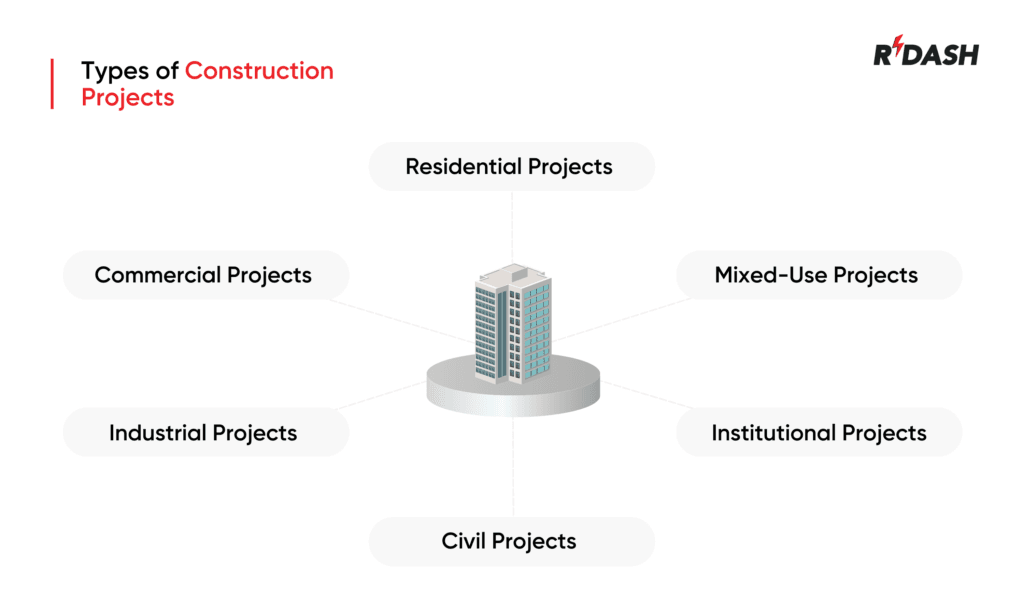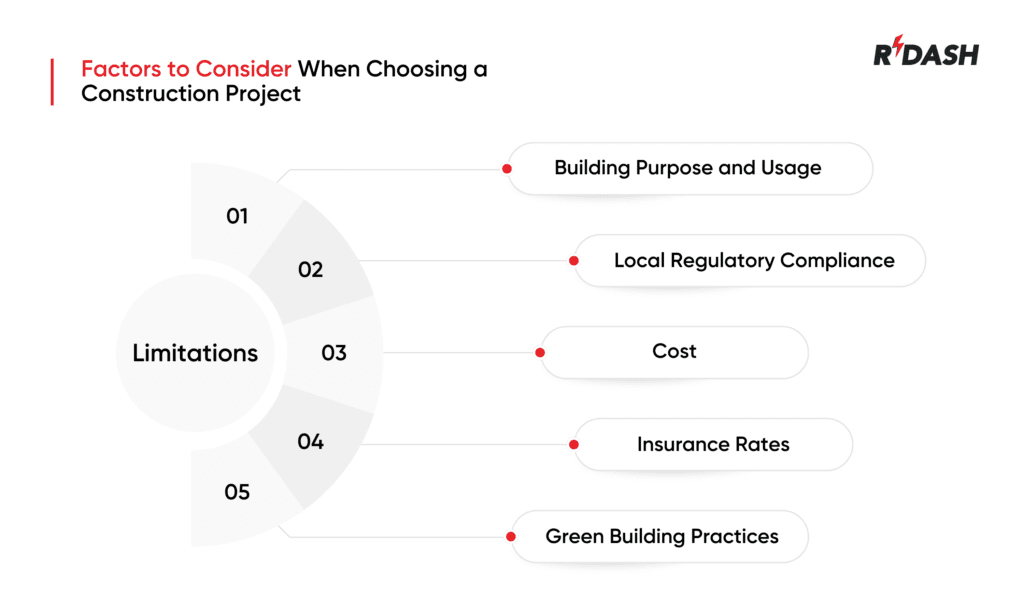The construction industry is large and diverse, consisting of different project types with specific requirements, stakeholders, and objectives. It is important for professionals involved in the industry to understand nuances between various project types involved in construction so that correct resource allocation can be done efficiently, effective project management ensures, and client expectations fulfilled. Six major categories of construction projects are presented, along with their characteristic features and specific challenges.

Residential Projects
Residential construction is concerned with buildings which are to be used as homes. Under this, one can include single family homes, duplexes and even the high-rise apartment complexes and condos. The projects require extensive knowledge of residential building codes, zoning laws, and great emphasis on creating functional, comfortable places to live. They often address considerations about privacy, aesthetic appeal, and efficient space use in order to create environments for well-being and community.
2. Commercial Projects
Commercial construction refers to commercial use buildings such as offices, malls, retail stores, and entertainment centers. This type of project usually tends to be of larger scale than that of residence and is governed by a higher degree of commercial building codes, which may considerably vary from residential codes. Commercial building will always require large open areas capable of being adapted to different business needs, besides highly developed infrastructure to support technology as well as heavy utilities usage.
3. Industrial Projects
Industrial construction includes buildings and facilities utilized for manufacturing, processing, and distribution. This may include the construction of factories, power plants, refineries, and warehouses. Industrial projects tend to be complex and big in scale, hence very demanding in terms of planning strength to accommodate heavy machinery, workflows, and storage needs. They should also adhere to strict safety and environmental regulations, calling for expertise in industrial engineering and environmental science.
4. Civil Projects
Civil and infrastructure projects are the core of a country’s economic and social system. Such projects include road construction and maintenance, bridges, water supply networks, sewage systems, airports, and public transportation. They are highly publicized and politically influenced, involving extensive coordination with multiple government entities. They also require long-term planning, considerable funding, and comprehensive environmental impact assessments.
5. Mixed-Use Projects
Mixed-use development involves combining residential, commercial, and sometimes industrial spaces into a single cohesive unit. It seeks to create vibrant, sustainable communities where living, working, and leisure are readily accessible to one another. The solution requires innovative architectural and engineering concepts that manage the diversity of varied uses. Mixed-use projects frequently function as the heart of community life, incorporating public spaces, transportation access, and ecological considerations that elevate the urban experience.
6. Institutional Projects
Institutional construction projects refer to those that are undertaken for institutions, such as schools, hospitals, government buildings, and religious organizations. Such projects normally require specific functionalities that align with the service provision, for example, acoustics in auditoriums, specialized equipment in hospitals, or even secure facilities for government operations. Funding may be complex and may involve the public sector budget, private donations, and other models of financing.
They must also accommodate all stake-holding from the general public up to some government officials down to various specific user groups.
Classification of construction projects by fire resistance
Fire resistance is a very important factor in the construction industry, especially in the United States, where strict building codes are designed to minimize the risks associated with fire. Such standards ensure that occupants are safe and reduce the potential damage to property. Construction projects in the U.S. are classified according to their resistance to fire, which determines the choice of materials, design, and construction techniques.
The IBC, being widely adopted in the United States, classifies buildings on fire-resistance. The kind of classification affects the method of construction, the kind of materials used, and, by extension, the design of the building. Here are the types classified:
Type I (Fire-Resistive):
These buildings are supposed to last longer in fire conditions. They are made of robust materials like reinforced concrete and protected steel, which can resist extreme temperatures. These include high-rise buildings, hospitals, and tall office buildings, as they require extended fire protection due to the probability of being unable to evacuate easily in emergency situations.
Type II (Non-Combustible):
They are also made from non-combustible material, like steel and concrete. The members are, however, not constructed to be fire-resistant at extreme temperatures for as long of a time period as Type I. Commercial warehouses and schools often utilize this sort of construction since it’s relatively fire resistant and not expensive.
Type III Ordinary:
Type III construction involves a mixture of noncombustible and combustible material. Exterior walls are made out of noncombustible materials but interior framing that is usually made of wood has combustible nature. That type of construction usually gives an old look of a building found in the heart of the city. This can vary with the treatment given to material and the installations of fire retardant systems.
Type IV (Heavy Timber):
Often referred to as “mill construction,” buildings of this type consist of large wooden beams and columns, which due to their size have greater fire resistance. While wood is the predominant material used in these buildings, the sizes of the materials make it possible for them to better resist fires than typical framing. Barns and older warehouses are examples.
Type V-Wood Frame:
This is the most susceptible type of construction to fire. All of the elements in such a building are made of wood, mostly for structural purposes and several others for non-structural components. These are mainly in residential homes and small apartment buildings to avoid the high cost of material for construction. Such buildings are most vulnerable to catching fire but are often incorporated with suppression systems to improve safety factors.
Factors to consider when choosing a construction project
The choice of construction project involves various considerations, especially when determining the fire resistance type :

Building Purpose and Usage
The intended use of the building will dictate the necessary level of fire resistance. For instance, hospitals and schools require higher fire resistance due to their public nature and occupancy levels.
Local Regulatory Compliance
Compliance with local codes is required. These codes will determine the fire resistance requirements based on the size, location, and type of building.
Cost
More fire resistance usually means higher construction cost. Budget may be a constraint on the choice between the different types of construction.
Insurance Rates
The building’s higher resistance to fire may help save on the premiums for insurance because there is less risk, thus making it a long-term saving.
Green Building Practices
Eco-friendly construction methods and materials can impact the fire resistance. Sustainability is essential, but it has to be in line with the fire safety standards for sustainable building practices.
Conclusion
It is crucial for people in the building and construction industries to understand classifications of construction projects by fire resistance. This ensures that the structures meet legal requirements, but also provide safe environments for the occupants. The construction technologies and materials, which continue to change with time, also have to do the same with the strategies meant for enhancing fire resistance in building projects to improve safety and efficiency.





